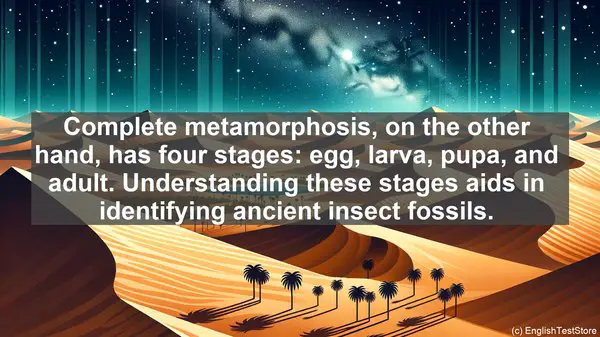Introduction to Paleoentomology
Welcome to our lesson on the top 10 commonly confused words in paleoentomology. As you delve into the world of ancient insects, it’s essential to grasp the precise meanings of these terms. Let’s get started!
1. Fossil vs. Trace Fossil
One of the first distinctions to understand is between a fossil and a trace fossil. A fossil is the preserved remains of an organism, while a trace fossil is evidence of an organism’s activity, such as footprints or burrows. Both provide valuable insights into the ancient insect world.
2. Exoskeleton vs. Endoskeleton
Insects, including their ancient counterparts, have exoskeletons, which are external hard coverings that provide support and protection. On the other hand, vertebrates, like us, have endoskeletons, which are internal frameworks. The exoskeleton is a defining feature of insects.

3. Extinct vs. Extirpated
When we say a species is extinct, it means it no longer exists anywhere on Earth. However, if a species is extirpated, it means it is locally extinct, but still found in other regions. Understanding these terms helps us track the distribution of ancient insect species.
4. Taxonomy vs. Phylogeny
Taxonomy and phylogeny are both concerned with classifying organisms, but they differ in approach. Taxonomy focuses on categorizing based on shared characteristics, while phylogeny looks at evolutionary relationships. Both are crucial for organizing the vast diversity of ancient insects.
5. Incomplete vs. Complete Metamorphosis
Metamorphosis is a fascinating process in insect development. Incomplete metamorphosis involves three stages: egg, nymph, and adult. Complete metamorphosis, on the other hand, has four stages: egg, larva, pupa, and adult. Understanding these stages aids in identifying ancient insect fossils.
6. Autecology vs. Synecology
When studying ancient insect species, it’s essential to consider their ecological roles. Autecology focuses on the individual species’ interactions with the environment, while synecology looks at the relationships between multiple species in a community. Both provide valuable insights.
7. Taphonomy vs. Paleobiology
Taphonomy and paleobiology are two branches of paleoentomology. Taphonomy examines the processes that affect an organism from death to fossilization, while paleobiology explores the biology and behavior of ancient insects. Together, they help us reconstruct the past.
8. Holotype vs. Paratype
When a new species is discovered, specimens are designated as holotype or paratype. The holotype is the primary specimen used to define the species, while paratypes are additional specimens that share similar characteristics. These designations ensure clarity in species identification.
9. Ichnotaxon vs. Body Fossil
In paleoentomology, we encounter both ichnotaxa and body fossils. An ichnotaxon refers to a trace fossil, such as a burrow, while a body fossil is the preserved remains of the actual organism. Both provide different types of information about ancient insects.
10. Infauna vs. Epifauna
When studying ancient insect communities, we distinguish between infauna and epifauna. Infauna refers to organisms that live within the sediment, while epifauna are those that live on top of the sediment. This differentiation helps us understand ancient habitats.

